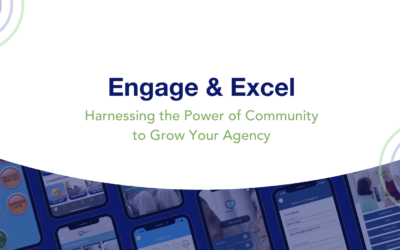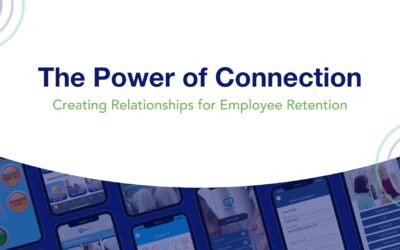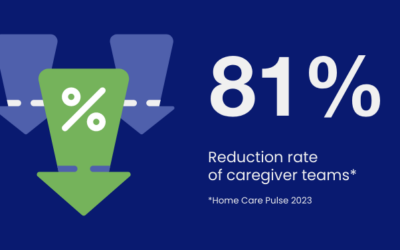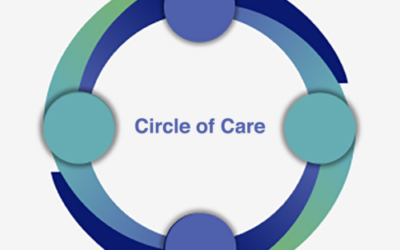It’s hard to fix a boat when you’re treading water–but so many agency owners we speak to are already drowning.
Maybe you’ve just had your second caregiver resign this month because you just can’t convince them to stay. The local Walmart is offering competitive pay, there’s been a huge change to their schedule, or they just aren’t getting enough hours to make ends meet.
Management consultants love to lecture owners about how a good onboarding process improves retention, but they never acknowledge how much effort that process takes to build. And they almost never give specifics on how to get started.
While it’s no substitute for a robust onboarding process, just 15 minutes of your time on Day 1 can mean the difference between retaining a caregiver for the long term and losing them within the first 3 months. That’s because many problems that cause caregivers to quit are surmountable…but only if they reach out to you for help.
Starting caregivers out right on Day 1 gives you the chance to solve problems that would otherwise cause caregivers to quit. Even better, when they know you care about them, they’ll give you more leeway on problems you can’t solve.
To do that, you’ll need to take time on Day 1 to show new caregivers that you’re caring, trustworthy, and available.
Here’s how to do it:
- Prep Them for Day 1
- Welcome Them Personally
- Tell Them About All Communications Channels
- Line Up the Paperwork
- Talk About Responsibilities and Expectations
- Learn About Each Other
- Discuss Recognition, Mentorship, and Perks
- Give Them Practical Training
- Introduce Them to the Team
- Debrief Them at End of Day
1. Prep Them for Day 1
Don’t wait until Day 1 to welcome new caregivers – help them feel like part of the team as soon as possible. When you help new caregivers prep for their first day, they’ll show up feeling more empowered and less stressed. It also demonstrates that being prepared and knowing what you need to do is part of your company culture.
After you hire a new caregiver:
- Send them a personal email or text saying how excited you are for them to start.
- If your company has a LinkedIn page, make a post to announce their hire and say you’re proud to welcome them.
- Give new caregivers all necessary paperwork they’ll need to have filled out. Digital forms are best if possible – nobody likes hauling forms in and out of the office.
- Send them a list of identification, certificates, or other personal documents they’ll need to bring in.
- Send them logins for all your digital platforms so they can start familiarizing themselves.
2. Welcome Them Personally
First impressions matter. According to a Home Care CEO Forum Best Caregiver Survey, 10.8% of caregivers stay with their company because they feel valued by company owners. That’s why it’s worth the effort to make new caregivers feel welcome and appreciated from the start.
- Have the company owner personally welcome them to the company. An in-person handshake is best, but even a quick personalized video can make a big impression.
- Let them know that, while you can’t plan for everything, you’re always available to listen.
- Schedule plenty of time for them to meet and talk with your administrative staff.
- Give them an overview of what will happen on their first day.
3. Tell Them About All Communications Channels
If new caregivers don’t know how to get answers to their questions, or if they don’t feel it’s safe to ask, they’ll start to disengage. That’s why it’s important to give them a clear, easy way to ask any questions they might have, at any time.
- Tell them about all of your communication channels. They should know who to contact with questions about:
- Pay
- Scheduling
- Client issues
- Personal matters
- Tell them which channel is a direct line to you or other important stakeholders.
- Let them know that you monitor messages there closely during work hours. Have them send you a direct message right then so they can see it works.
- If there are any periods when you don’t check that channel, let them know when.
- Give them a way to reach the office 24/7 in case of emergency.
- Show them how to quickly ask questions and get answers on your platform.
- Act out a scenario with them where they have a question they need answered, and show them what tools they can use to achieve a solution. This will help them be more confident finding information on the job.
4. Line Up the Paperwork
While it’s best if new caregivers can finish the paperwork in advance, that doesn’t always happen. Things like parenting, busy schedules, and even getting confused by the forms themselves can all get in the way. That’s why it’s important to make time during the first day for caregivers to finish any paperwork they couldn’t handle in advance.
- Schedule some time during the day for them to complete any paperwork that needs to be done.
- Make your staff available to help them complete the paperwork if needed.
5. Talk About Responsibilities and Expectations
New caregivers can’t meet expectations they aren’t aware of. Have your office staff sit down with your new caregiver to discuss their responsibilities.
- Make sure they understand all the responsibilities of the job (including informal responsibilities).
- Set clear goals and expectations for the 30-, 60-, and 90-day employment marks.
- Let them know when they should complete all onboarding training.
- List the top five skills they’ll need to learn.
- Give them a clear schedule for feedback so they know how and when it’ll arrive.
- If you already know which client they will work with, give them some key information on that client.
- Write all of this information down for them in a place they can access so they can review it later.
6. Learn About Each Other
Schedule time for your staff to discuss your new caregiver’s wants and needs, and to answer any questions.
- Ask them what their goals are for this job. Write down their answers and show you want to help.
- Talk to them about your company culture.
- Ask and answer key questions that they might not have considered, like:
- Who will reach out to them about scheduling?
- Do they prefer to be called, emailed, or texted?
- What do they need to do on their first shift?
- Encourage them to ask any other questions they might have and ensure they know where to go with questions in the future.
7. Discuss Recognition, Mentorship, and Perks
When caregivers feel abandoned, they start to drift away. Show new caregivers that you appreciate them – and that your appreciation means more than just a pat on the head.
- Walk them through your process for recognizing caregivers. Show them some examples.
- Tell them about your mentorship programs. Connect them with a mentor right then if possible.
- Emphasize any perks you offer and make sure they understand how to use them.
8. Give Them Practical Training
Quality training doesn’t just improve care; it also improves retention. According to a 2021 CareAcademy report, 85% of caregivers are more likely to stay with their agency if offered further education resources. On the other hand, those who aren’t trained properly often quit out of confusion and frustration.
If you can’t get caregivers to complete training materials, it’s generally for one of two reasons:
- They can’t access the materials easily.
- They don’t understand why training matters.
Ask yourself: What are you doing to show caregivers that training materials are there to help them? And what are you doing to get them set up with those materials?
You should be able to answer each of those questions for every new caregiver on their first day. Here’s how.
First, you’ll need to walk caregivers through your platforms. This can be accomplished in person, or through a robust (and easy to access) video library.
- Educate them on your platforms. For each one, explain:
- What is it?
- What does it do?
- Why is it important for them to use it?
- How can it help them?
- Have them show you they are able to log in.
- Show them how to find things like training, scheduling, and client information.
- Give them time to explore your platform and ask any questions.
- Address any discomfort they might have with using the platform. Make sure that they feel comfortable enough to use it without supervision.
Next, you’ll need to give caregivers a reason to finish their training.
- Show them that training is a resource for them. It’s there to give them what they need to do their jobs.
- Let them know they can reference past material in case they get stuck.
- Make sure they know how to quickly access their training materials on your platform.
- Make sure they know that training is mandatory and should be completed by a certain date.
- Include training on a variety of topics beyond what’s strictly necessary so they can continue to educate and empower themselves.
9. Introduce Them to the Team
Caregivers who feel isolated or disconnected from the rest of the team are likely to drift away. Introducing them to everyone else will help them put faces to the names and show them they’re part of something bigger.
- Give them an in-person introduction with as many team members as possible.
- Show them introduction videos from staff members who aren’t able to be there in person.
- Help them understand everyone’s specialties so they know who to come to with questions.
10. Debrief Them at End of Day
A caregiver’s first day can be overwhelming, and they may feel like they’ve bitten off more than they can chew by the end of it. To help, schedule a quick meeting or call at the end of the day to touch base and wrap things up.
- Ask how they’re feeling after their first day.
- Make space to answer any new questions they might have.
- Reassure them about any areas of concern or confusion they might have.
- Go over their top priorities for the next day.
Day 2 and Beyond
The tips in this checklist are a great way to get off on the right foot on Day 1, but onboarding doesn’t end after the first day. The onboarding process isn’t just the first week of your caregiver’s employment – it’s the entire three-month period after hiring.
Learn about how to retain new caregivers in our guide 9 Essential Things You Need to Do to Keep Your Caregivers for 90 Days and Beyond.











